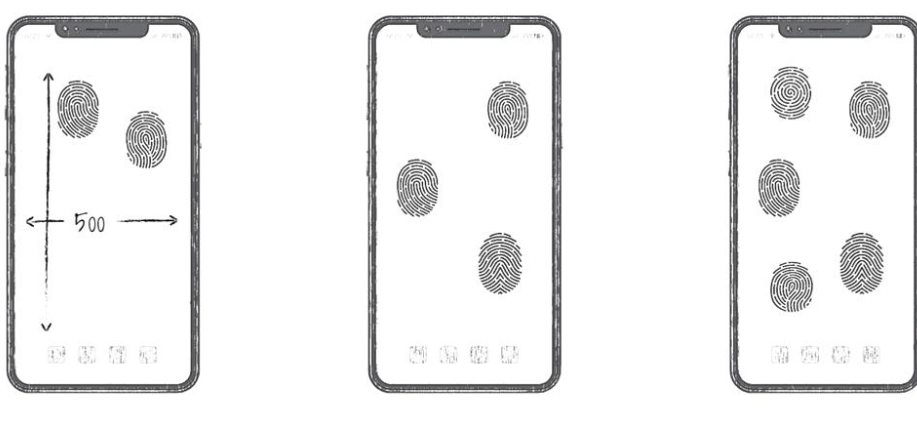The innovation described in a patent submitted by Huawei would make it possible to authenticate the user’s biometrics by scanning several fingerprints simultaneously, placing his fingers anywhere on the screen surface of a smartphone.
The pending patent covers six major retail markets (China, Europe, USA, Japan, Korea and India) and will allow Huawei to equip its smartphone products with fingerprint sensors that cover the entire surface of the screen.
Huawei describes the first smartphone with an all-screen fingerprint sensor
According to Huawei, full-screen biometric authentication has many advantages over implementations with a separate sensor on the phone case, or limited to a small area below the screen. For example, users will be able to fingerprint certain applications installed on the phone, the authentication working by simply touching the icon of that application. The idea is not new, the app lock functionality being implemented in various forms at several smartphone manufacturers. But this time the additional security mechanism will be able to work completely transparently for the device owner, without displaying a dialog for fingerprint scanning and unwanted waiting times.
In an example to illustrate the use of shortcuts triggered by a certain combination of fingerprints / finger positions on the screen, Huawei mentions the ability to access the SMS application without first unlocking the screen, or interacting with notifications in the Lockscreen menu.
Huawei also mentions the possibility of “activating fingerprint reading in a selected area of the screen, keeping the rest of the surface inactive” to reduce power consumption. For example, those who use only the bottom and middle of the screen for authentication will be able to disable the top, thus ensuring that they will not unlock the phone as soon as they put their hand in their pocket.
As for possible sources from where Huawei could procure the new fingerprint reading sensor, the Synaptics manufacturer has promised since 2018 a technology capable of permanently verifying the user’s identity, even while using the mobile phone. The described solution involves extending the fingerprint sensor to cover the entire active surface of the screen and promises immediate screen lock when the fingerprints of an unrecognized person are detected.
For now, neither Huawei nor the Synaptics manufacturer offers a precise deadline for the launch of mobile phones equipped with an all-screen fingerprint sensor.


